November 24, 2025
Inspiration Report: The Sanctuary
My presentation was having a lot of trouble being embedded into a post, so in case it continues to not pop up for anyone viewing this, here is the link straight to the presentation: https://www.canva.com/design/DAG5lqICeuU/ZGYmbLVvpl4FiyESSnmNxQ/view?utm_content=DAG5lqICeuU&utm_campaign=designshare&utm_medium=link2&utm_source=uniquelinks&utlId=h81e58170b4
November 17, 2025
Reflection 5: Infinite Learning
A college or university library is traditionally seen as the academic heart of the campus, dedicated to research papers and intensive, often solitary, study. However, as the information world changes, a library’s potential lies in becoming a true hub for infinite learning, building skills that are practical for daily life, and preparing students for their futures. To do this, librarians and staff should shift their focus from being subject instructors to being facilitators of critical thinking and life skills. A common model of instruction consisting of a librarian visiting a class to teach basic database searching, while useful on an academic level, may not be enough if the long-term goal is to prepare students for lifelong learning beyond the classroom (Lippincott, 2015). Future teaching requires a deeper, multi-stage approach, moving away from teaching more niche skill sets for research towards focusing on knowledge practices and dispositions, ready for lifelong application. This evolution encourages students to become sophisticated content creators.
This change encourages students to move beyond term papers and create projects like videos, websites, or even 3D-printed objects (Lippincott, 2015). The skills acquired here, such as multimedia literacy and technological fluency, go beyond the academic discipline and become practical tools for personal and professional life. This kind of deeper engagement naturally leads to the concept of “messy learning” (Block, 2014). Authentic, project-based work involves struggle and frustration, but emphasizes that this discomfort is an organic part of the creation process. The academic library is perfectly suited to support this by offering non-curricular programs that explore practical domains. Instead of solely assisting with a literature review, staff can host workshops on topics like digital citizenship or financial literacy. By utilizing library makerspaces and media studios for personal, non-graded projects, librarians provide a low-stakes environment where students can fail and iterate, which prepares them for the ambiguous, unscripted challenges of adulthood (Block, 2014). The college library, supported by adaptable and informed staff, is positioned to redefine its essential purpose. It shouldn’t be a sanctuary exclusively for disciplinary silos, but a dynamic, democratic workshop for comprehensive human development. By embedding themselves deeper into the process of active, multimodal learning (Lippincott, 2015) and supporting the necessary struggle that leads to real creation (Block, 2014), academic librarians foster the kind of resilient, infinite learners the world truly needs. These are individuals prepared to navigate complex information, create value, and solve the practical, messy problems of daily life long after graduation.
References
Block, J. (2014). Embracing messy learning. Edutopia. https://www.edutopia.org/blog/embracing-messy-learning-joshua-block
Lippincott, J. K. (2015). The future for teaching and learning. American Libraries Magazine. https://americanlibrariesmagazine.org/2015/02/26/the-future-for-teaching-and-learning/
November 10, 2025
Reflection 4: The Power of Stories
Libraries play a super important role in keeping and sharing knowledge. The ways in which knowledge is shared greatly impacts how communities bond and interact with one another. The Human Library, as Wentz (2013) highlights, is a great example of how powerful storytelling can be. This practice allows for individuals from all walks of life to connect with each other and challenge any stereotypes by engaging in safe and friendly conversations in welcoming places. Creating opportunities for connection in a more human-focused way, valuing conversation and understanding, can open up more opportunities to fight prejudices within the community and beyond. Libraries have a duty to connect with their communities as well as fostering interactions between community members. The findings from Arne-Skidmore (2021) explain that storytelling is such an important and impactful tool both in terms of entertainment but also in helping people connect with one another in order to see the world around them from multiple perspectives. In an academic library, for example, having community-based events where students from many backgrounds and majors come together can begin to break down barriers between various student groups. When I was an undergraduate student, it was pretty isolating to only be within my own discipline (child development), so I ended up branching out for my extracurriculars in the form of joining my college’s student-run radio station. Becoming an on-air DJ allowed for me to meet so many new people I would have never interacted with otherwise, especially since the station was open to students of all majors!
Academic libraries have a great chance to utilize events, programs, or even social media and campus collaboration to bring the student body together just by being a central area of campus lots of students use. However, academic libraries often have a tough time bringing this kind of engaging, community-focused approach into what they do. They tend to be seen mainly as places for research support, focusing on typical resources such as databases, study spaces, and circulation numbers. Because of this, they might miss out on creating a warm and welcoming environment that can support the social and emotional needs of students and staff. Given their central role on campus, academic libraries have a fantastic opportunity to shift their focus from just storing knowledge to becoming vital hubs for connection and community.
To build better connections on campus, academic libraries have many avenues that can be explored. One great idea is to adopt a “Human Library” approach, where students, faculty, and staff can share their unique experiences and backgrounds. Imagine having a veteran student discuss their transition to college life, or a first-generation college student share their experiences with imposter syndrome. Staff or staff with student workers could team up with departments like English or History to run classes where students interview retiring professors or long-time staff, creating a living archive of our campus’s history. This effort not only keeps memories alive but also gives future researchers access to unique, human stories. By focusing on spaces, expert staff, and programs that emphasize sharing, empathy, and storytelling, the library can really become a central hub where diverse campus communities come together, not just to consume information, but to share their experiences and build a more connected, supportive environment.
References
Arne-Skidmore, E. (2021). New study on the impact of the human library . The Human Library Organization. https://humanlibrary.org/new-study-on-the-impact-of-the-human-library/
Wentz, E. (2013). The human library: Sharing the community with itself – public libraries online. Public Libraries Online – A Publication of the Public Library Association. https://publiclibrariesonline.org/2013/04/human_librar/
October 27, 2025
Reflection 3: New Horizons
The continuous evolution of the digital landscape, especially in college-level research, requires academic libraries to maintain a proactive stance, positioning technological disruption, like the rapid adoption of generative AI tools, not as a crisis but as a necessary and ongoing challenge to be navigated (Papini, 2023). New technology tools, especially AI programs, are celebrated for being easy and convenient, but when it comes to an academic scenario, such as conducting research or writing a paper, integrity, originality, and critical thinking are far more important (Anderson et al., 2021). This strategic mindset ensures that librarians can effectively support student success by addressing the real-world research dilemmas presented by these new assistants. The fundamental issue facing student researchers is the integrity of their sources. Reputable, honest academic work requires verifiable sources, which is why citations are essential. Unfortunately, because generative AI is “taught” by massive, synthesized datasets, it is often unable to provide real citations, especially when some outputs may contain AI-generated sources or AI hallucinations, directly compromising academic integrity and quality (Papini, 2023). The output is often vague, inaccurate, and lacks currency, leading the library to conclude that AI output holds little authority in a researcher’s toolbelt and cannot be considered a credible or scholarly source (Papini, 2023).
This crisis of authority places a clear and continuous burden on academic librarians, who must dedicate themselves to constant technology awareness and expertise in order to prepare for the ever-changing digital landscape that academia has found itself in. The librarian’s essential role is to become more of a navigator, helping the community to understand how AI tools such as ChatGPT can be used, as well as the threats that can come from relying on generative AI to complete work in place of critical thinking and a more traditional research process, as well as providing guidance on the appropriate use of such tools (Papini, 2023). To fulfill this mandate, librarians must promote ethical research methods, educating students and colleagues in two areas. The first is traditional source authentication in order to reinforce that AI is not to be used as a replacement for human writing within the scholarly process (Papini, 2023). The second is ethical digital citizenship, where students must be made aware of the more subtle costs of convenience, such as the fact that users of the free preview are providing free training for ChatGPT’s breadth of information. There are also many issues regarding misinformation, security, injustices, and the general threat of humanity being taken out of day-to-day functions (Anderson et al., 2021). By focusing on transparency, verification, and critical judgment, academic librarians ensure that students master foundational skills and are equipped to strategically utilize, rather than be replaced by, new technology, ultimately supporting student success in this increasingly complex digital environment (Papini, 2023).
References
Anderson, J., Rainie, L., & Vogels, E. A. (2021). Experts say the “new normal” in 2025 will be far more tech-driven, presenting more big challenges. Pew Research Center. https://www.pewresearch.org/internet/2021/02/18/experts-say-the-new-normal-in-2025-will-be-far-more-tech-driven-presenting-more-big-challenges/
Papini, A. (2023). CHATGPT: A library perspective. Krupp Library. https://library.bryant.edu/chatgpt-library-perspective
October 20, 2025
Innovation Roadmap: Junimo Junction Makerspace
Welcome to Pelican Town College! With a diverse student population and a wide variety of fields of study, students may find themselves busy with coursework as well as other life commitments. At the Harvey Library, located on campus and dedicated to Pelican Town’s very own Dr. Harvey, library staff and admin have noticed a need for a creative space for students to channel their creativity, work on creative projects for classes, or even attend an art workshop hosted by Pelican Town College Art Department faculty and students! With our newly renovated building, we officially have a dedicated space for our new makerspace: The Junimo Junction.
Go Junimos!
The Idea
The Junimo Junction (which may be referred to as The Junction) will be a dynamic, flexible space within the library dedicated to hands-on creation, experimentation, and collaborative learning. It will feature diverse, low-to-mid-fidelity technologies and materials, such as 3D pens, vinyl cutters, soldering stations, sewing machines, art supplies, and basic electronics kits. The focus is not on high-end and complicated fabrication but on creative problem-solving as well as digital and physical literacy. Weekly workshops hosted by the Art Department faculty, students, and special guests will be the backbone of the program, planned by library staff in collaboration with the student body, ensuring the offerings are relevant and engaging to the campus community. This model leverages the power of peer-to-peer learning and distributed expertise.
Goals and Objectives:
- Increase student engagement with the library by offering novel, non-traditional learning experiences.
- Develop students’ 21st-century skills, including creativity, critical thinking, collaboration, and practical technology application.
- Foster a culture of student leadership and participatory design in library services.
The primary community is the entire student body, with a special focus on students in non-STEM disciplines (e.g., humanities, arts, social sciences) who may have limited access to similar facilities. The Junction will also serve student organizations looking for a space to collaborate and create promotional materials or projects. This helps them by providing a low-stakes environment for skill acquisition, a venue for creative decompression, and opportunities to apply theoretical knowledge to tangible projects, making the library a proactive partner in their holistic education. These student organizations may range from the Associated Student Council, student-run clubs, to student resource centers.
Check out what Georgia Tech has created for its students here! (Georgia Tech ECE, 2018)
Mission & Institutional Context
The Harvey Library’s mission is to empower a diverse learning community by connecting students, staff, and faculty with resources, fostering intellectual exploration, and cultivating a space for the co-creation of knowledge. The library serves a large, diverse, commuter-heavy student population with a high percentage of first-generation students. Current needs include offering more spaces for active, collaborative learning beyond traditional study rooms and group tables, and providing more opportunities for skill-building that complements classroom instruction. A makerspace, particularly one centered on student-led and participatory planning, is vital now because it directly addresses the need for experiential learning and community building, both of which are critical for student retention and success. The participatory model ensures the service is immediately relevant, maximizing impact with constrained resources. It transforms the library from a passive service provider into an active platform for student agency and applied learning, aligning with the institution’s strategic goals for student engagement.
This implementation plan strictly adheres to the principle of a technoplan over technolust, ensuring that the makerspace’s evolution is robustly based on the library’s mission of fostering intellectual exploration rather than succumbing to an “irrational love for new technology combined with unrealistic expectations” (Stephens, 2004).
Action Brief Statement
For Students
Convince all students that by participating in and proposing workshops in The Junimo Junction, they will discover the joy of hands-on creation and the practical application of their knowledge, which will cultivate a resilient, innovative mindset and build a powerful peer network because the library is about connecting resources, ideas, and, most importantly, people. With a commuter culture on campus, it is important to foster relationships amongst the student population, all while connecting these students to Harvey Library in order to further learn about study spaces and the student resources that exist inside.
For Staff
Convince library staff and faculty that by embracing the student-led makerspace model, they will discover new, authentic ways to engage with the campus community and redistribute instructional labor, which will redefine the library as a vital, high-impact hub of applied learning because the library’s future is in fostering student agency and active co-creation of services.
Inspiration
- Cal State Fullerton’s Makerspace: https://libraryguides.fullerton.edu/makerspace
- Cal State Fullerton’s Associated Students Inc. drop-in art workshops: https://asi.fullerton.edu/services/ (may have to scroll down about halfway)
- Georgia Tech’s The Hive Makerspace: https://hive.ece.gatech.edu/
Guidelines & Policies
The guidelines must prioritize safety, accessibility, and the student-led model.
- Usage Guidelines:
- Safety First: Mandatory, brief online orientation module covering basic tool safety (e.g., safe use of vinyl cutters, soldering irons) before equipment access. The module may be viewed on a check-in tablet stationed at the entrance of the makerspace, or on a student’s personal device via a QR code.
- Student-Led Workshop Policy: A streamlined proposal form for students to submit workshop ideas, including materials needed, learning goals, and desired schedule. Proposals will be reviewed weekly by a small advisory committee (librarian, student worker, and student user).
- Students may apply to be a part of the committee at any point in the academic year, staff will add more students based on demand and scope of makerspace goals.
- Reservations & Drop-in: Clear policy on reserving larger equipment (e.g., 3D printer time) versus drop-in use for low-fidelity tools and art supplies.
- Code of Conduct: Zero-tolerance policy for creating weapons, illegal items, or hate-speech related content.
- Policy Creation Model:
- The process for creating all operational policies (usage, safety, student-led workshop proposals) will be a model of community-led planning (Lenstra & Barbakoff, 2024). This ensures that the authority to make decisions regarding the space and its offerings is genuinely shared with the community it serves, namely, the students on the advisory committee.
- Approval & Creation:
- The Library Management Team will provide final approval of the overall policy framework.
- The Commons Advisory Committee (including students) will draft the specific operational procedures and workshop proposal criteria, ensuring a student-centric, participatory approach.
- Ethical, Access, or Operational Issues:
- IP/Copyright: Clear guidance stating that the library does not claim ownership of student-created intellectual property, though a voluntary release for promotional photos will be requested.
- Accessibility: Ensure the physical space, equipment, and training materials (e.g., orientation videos) meet accessibility standards (ADA compliance). The student-led workshop proposal form must include a section on how the presenter will ensure the activity is accessible to all learners.
- Cost Recovery: Initial supplies will be free, but a policy for cost recovery on high-use consumables (e.g., large 3D prints, custom-ordered materials) may need to be developed after the pilot phase.
Timeline
A four-phase, 12-month timeline is realistic for a successful rollout.
| Phase | Duration | Key Phases in Project Flow |
| Phase 1: Planning & Procurement | Months 1-3 | Confirm the Space & Funding: Finalize location, acquire initial budget approval.
Equipment & Materials Acquisition: Order core equipment (3D pens, vinyl cutter, basic art supplies). Policy Development: Draft and secure approval for safety and usage policies with the advisory committee and library administration. |
| Phase 2: Build-Out & Training | Months 4-6 | Space Setup: Furniture installation, power drops, security features.
Staff Recruitment & Training: Hire and train initial student workers; train core staff liaison. Marketing Materials Creation: Develop branding and core promotional assets. |
| Phase 3: Soft Launch & Pilot | Months 7-9 | Internal Workshops: Run test workshops with staff and student workers to refine logistics.
Student Leader Recruitment: Solicit and onboard the first cohort of student workshop leaders. Social media and on-campus advertisements may be used. Pilot Program: Offer 4-6 student-led weekly workshops for a small, targeted user group (e.g., student clubs). |
| Phase 4: Grand Opening & Full Launch | Months 10-12 | Grand Opening Event: Major campus event to introduce The Junimo Junction.
Full Workshop Schedule: Implement a full slate of 8-12 weekly student-led workshops. Evaluation Framework: Deploy initial user surveys and start tracking metrics. |
Marketing & Promotion
The marketing message will emphasize agency, community, and low-barrier entry.
- Internal Promotion (Staff Buy-in):
- Staff Briefings: Hold informational sessions showcasing successful projects and emphasizing how the makerspace will alleviate staff instruction burden by utilizing peer-to-peer learning.
- Internal Newsletter: Feature “Spotlight on Student Innovation” stories to demonstrate impact.
- External Promotion (User Engagement):
- Communication Channels:
- Social Media: Dedicated Instagram/TikTok feed (run by student workers) showcasing in-progress projects and workshop proposals.
-
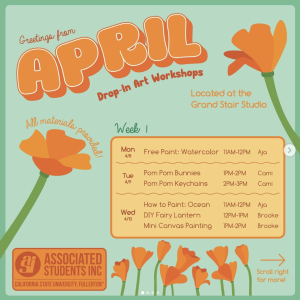
(CSUF Associated Students Inc., 2024)
- In-Library Signage: High-traffic digital displays with a “Workshop Proposal of the Week” and a schedule board.
- Targeted Outreach: Partner with student-facing offices (e.g., Student Life, Academic Advising) and specific academic departments (Art, Communications) to promote the workshop leadership opportunity. Librarian liaisons may also advertise The Junction when visiting classes to introduce students to library resources.
- Email: Weekly opt-in newsletter with the workshop schedule and a prominent link to the proposal form.
- Communication Channels:
Staff Training & Readiness
Training will focus on shifting staff roles from direct instructor to facilitator and supporter of student learning.
- Information/Skills Needed:
- Technical Familiarity: Core staff need basic familiarity with all equipment (e.g., how to load a vinyl cutter, basic 3D printer troubleshooting) to assist with open lab hours.
- Facilitation and Safety: Skills in managing a creative public space, basic first aid, and ensuring compliance with safety protocols.
- Participatory Planning: Training on how to effectively review student proposals, provide constructive feedback, and empower students to lead.
- Buy-in Strategy: The staff training and communication plan is focused on achieving staff buy-in, as opposed to burnout, by involving staff from the beginning of the planning process. By consulting front-line staff on the impact on service delivery and workflow, the library avoids “surprising a team of library workers with a new technology,” which can be a recipe for service disaster (Stephens, 2004).
- Who Will Be Trained and Who Will Train Them?
- Core Team (Liaison Librarian & Student Workers): Trained by external consultants or by attending workshops/conducting peer studies at existing makerspaces on technical skills and operational best practices.
- Public Services Staff: Trained by the Core Team on high-level equipment function, safety procedures, and how to direct students to resources/student leaders.
- Materials/Support Tools:
- Standard Operating Procedures (SOPs): Detailed, visual guides for equipment use, troubleshooting, and opening/closing the space.
- Student Leader Handbook: A guide for students on how to design, market, and lead a successful workshop, including a template for materials and lesson plans.
- Digital Resource Hub: A dedicated intranet site with links to all manuals, contact information, and the workshop proposal tracking system.
Evaluation & Future Expansion
The evaluation will be guided by the success of the participatory model and its impact on student engagement.
- Performance Benchmarks & Usage Metrics:
- Participatory Success: Number of unique student-led workshop proposals submitted and executed per semester (Target: 10+).
- Engagement: Total attendance at workshops (Target: 500+ unique student visits per academic year).
- Community: Number of non-academic student groups using the space for project creation.
- Library Perception: Increase in positive responses on a quarterly library survey related to opportunities for creative learning and library relevance.
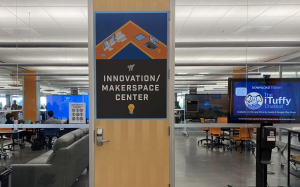
(Samaniego, 2023)
- Success Stories: At The Junimo Junction, we hope to tell stories about students successfully using the equipment (e.g., a history major 3D printing an ancient artifact model for a presentation) and students who developed professional-level teaching and leadership skills by consistently leading workshops.
- Feedback Gathering:
- Workshop Exit Tickets: Quick, anonymous surveys after each workshop on content and instruction quality.
- Student Advisory Committee: The advisory committee will serve as the formal feedback channel, reviewing data and suggesting improvements.
- Suggestion Box: A physical and digital box for ongoing, informal feedback and equipment suggestions.
- Future Growth:
- Expansion of Equipment: Adding high-demand equipment (e.g., laser cutter) if initial demand is consistently high and budget allows.
- Academic Integration: Partnering with faculty to formally integrate makerspace use into course assignments (e.g., using printing materials to create displays for Business student poster sessions or using recording equipment for a podcast intro for a Communications class).
- Certified Student Mentors: Creating a tiered system where experienced student leaders can be trained and compensated to offer one-on-one consultation and advanced training during open lab hours.
References
Associated Students Inc., CSUF on Instagram. Instagram. (2024). https://www.instagram.com/p/C5HF1nRMean/?img_index=1
Georgia Tech ECE. (2018). Interdisciplinary Design Commons (IDC) – An ECE Makerspace for All. YouTube. https://www.youtube.com/watch?v=yDrdQhrnWCw
Lenstra, N., & Barbakoff, A. (2024). Working Hand in hand. American Libraries Magazine. https://americanlibrariesmagazine.org/2024/03/01/working-hand-in-hand/
Samaniego, D. (2023). CSUF makerspace encourages innovation among students. Daily Titan. https://dailytitan.com/lifestyle/csuf-makerspace-encourages-innovation-among-students/article_8920d874-adbc-11ed-b84c-0b9e2157ca0b.html
Stephens, M. (2004). Technoplans vs. Technolust. Tame the Web. https://tametheweb.com/2004/11/01/technoplans-vs-technolust/
October 12, 2025
Reflection 2: Hyperlinked Environments
The Hyperlinked Environments Module provided many great resources on the ever-changing landscape of academic libraries and the environments they foster. One particular article that really resonated with me was Reimagining the role of the library in the digital age: changing the use of space and navigating the digital landscape by Keith Webster for the London School of Economics and Political Science blog in 2017.
The academic library is experiencing a profound and constant transformation, moving beyond its base role of housing print collections to fulfill a critical, evolving role in meeting the unique needs of a diverse student body (Webster, 2017). In the digital age, the library’s importance as a dynamic third space, or an essential environment distinct from the classroom, work, or residential life, has arguably intensified. Students today seek not only a formal space to work and study, but also a more community-based environment for collaboration and socialization, leading to a doubling of visitor numbers in some institutions. This new role demands a hybrid approach to space, accommodating collaborative study, the pursuit of interdisciplinary debate, and the creation of tangible objects using new technologies (Webster, 2017).
To successfully meet the unique needs of a diverse student population, the library must cater to varied modern learning styles. This includes dedicating space for quiet, reflective study alongside facilities like makerspaces, gaming studios, and dedicated collaboration zones (Webster, 2017). This is done in an effort to create an environment that fosters creativity and community, all while keeping the goal of student success near and dear to library operations. The form of student work is now inherently different, often requiring interaction and hands-on creation, which means the library must facilitate this transition away from purely traditional, individual work. By offering this versatile allocation of space, the library becomes a functional hub for modern scholarship and creativity, thus serving students beyond simple access to print resources or digital databases.
Librarians and library staff are essential for this institutional advancement, particularly as their core professional skills are transformed by a highly complex, digital information landscape (Webster, 2017). Since users often meet their informational needs outside the physical building, the priority for staff must shift to engaging with the student population by putting themselves in a student’s daily routine, rather than purely focusing on getting students in the building on their own. Librarians may be tasked with developing pathfinders and guides to help students navigate the large amount of research material, both physically in the stacks of the library as well as all of the digital resources available to students (Webster, 2017). Furthermore, they play an important part in showcasing research outputs and guiding students to the most appropriate information management tools. By leveraging their foundational skills to teach digital literacy and research navigation, librarians become crucial partners in student discovery, ensuring the library remains relevant and effective in its reimagined role while still fostering student success and empowering students to continue on with what they are passionate about.
References
Webster, K. (2017). Reimagining the role of the library in the digital age: changing the use of space and navigating the information landscape. LSE Impact Blog. https://blogs.lse.ac.uk/impactofsocialsciences/2017/02/15/reimagining-the-role-of-the-library-in-the-digital-age-changing-the-use-of-space-and-navigating-the-information-landscape/?platform=hootsuite
October 6, 2025
Reflection 1: Hyperlinked Communities
All of the content from the Hyperlinked Communities module greatly interested me, but I found myself looking back at a few specific inclusions multiple times. These include the article titled ‘Free, non-judgemental, accessible’: How your local library is a sanctuary of health and wellness by Tareq Nurul Hasan (2022), Healthy Library, Healthy Life by Cory Greenwood (2022), and the video “Wash & Learn” Pop-Up Library Program in the Bronx from the YouTube channel Bibliothèques Sans Frontières (2017). As I read through these articles and watched the video, my thought process immediately started thinking about how a service such as a pop-up library reference service could fit into a campus community at a college or university.
A pop-up library that focuses on providing resources for a community demonstrates a creative example for extending resources beyond traditional methods often seen on college and university campuses. This model of outreach, where libraries meet patrons during routine, lengthy downtime, is proven to be a feasible way to deliver services and could be directly supported by successful community or campus initiatives (Bibliothèques Sans Frontières, 2017).
For academic libraries, pop-up services can be a hands-on method to increase visibility and raise awareness of campus offerings. By setting up a mini “reference desk” in places such as dorm laundry facilities, campus food pantries, or student wellness centers, librarians can bring information to patrons to connect with students who may benefit from campus resources. These environments reinforce the library’s role as a place that values the health and wellness of the student body while keeping it accessible by placing themselves directly in the middle of a student’s daily routines (Nurul Hasan, 2022). Library visibility in these casual environments works to uplift student well-being, aligning with organizational goals to address social connection, mental health, and academic success (Greenwood, 2022).
This model creates a crucial opportunity for a library to form impactful partnerships with campus support offices, specifically Disability Support Service (DSS) and Adult Reentry programs. These students often represent a portion of campus that may not always be taken into consideration when campus organizations are analyzing their target audience, and libraries must make the effort to ensure equitable access to support (Greenwood, 2022). A pop-up desk in a student wellness center would promote the connecting of students with disabilities with essential resources such as adaptive technologies, one-on-one tutorials or peer mentors, and research tools designed for various abilities. Simultaneously, Adult Reentry students, some of whom may feel overwhelmed by the modern academic environment, can be introduced to one-on-one research consultations and citation management instruction. Library presence may also be useful in other campus spots, such as an on-campus food pantry or a “career closet” with the goal of assisting students with any additional resources they may be looking for, or to introduce students to campus assistance they may not have known about prior. Student success and well-being should be a top priority during these types of pop-ups.
By using the pop-up model to integrate library services into the student support network, a university can actively demonstrate a commitment to equity and retention. Collaboration focused on connecting with the student body promotes a closer bond between the library and the students, making sure that students of any background are introduced to services that can greatly benefit them throughout their academic careers (Greenwood, 2022; Nurul Hasan, 2022).
References
Bibliothèques Sans Frontières. (2017). “Wash & Learn” Pop-Up Library Program in the Bronx. YouTube. https://www.youtube.com/watch?v=9HM7pQiqDZY&t=192s
Greenwood, C. (2022). Healthy Library, Healthy Life. INCITE, 43(6), 24–24.
Nurul Hasan, T. (2022). “Free, non-judgemental, accessible”: How your local library is a sanctuary of health and Wellness. SBS Bangla. https://www.sbs.com.au/language/bangla/en/article/free-nonjudgmental-and-accessible-how-your-local-library-is-a-sanctuary-of-health-and-wellness/t15blzsi9
Bonus Examples of Services Mentioned Courtesy of Cal State Fullerton (my alma mater!):
Basic Needs Services: https://www.fullerton.edu/basic-needs/
Adult Reentry and Parenting Student Program: https://www.fullerton.edu/adultreentry/
Associated Students Food Pantry: https://www.fullerton.edu/basic-needs/calfresh/food.html
September 20, 2025
Assignment X: Participatory Service and Transparency Within an Evolving Scholarly Ecosystem
Transparency and Participatory Service in Academic Libraries and Beyond!
The theme of transparency and participatory service in academic libraries stands out to me because it challenges the traditional hierarchical structure of library services and promotes a more collaborative, inclusive approach to serving students, faculty, and the community. In academic libraries, transparency means not only being open about decision-making processes, but also encouraging feedback and input from users (campus community), making them integral partners in shaping the library’s offerings. This concept is especially critical in today’s rapidly changing academic environments,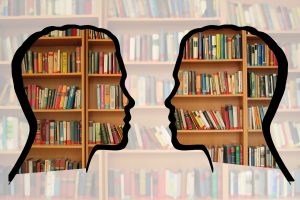 where users are seeking more personalized, responsive services. Reflecting on the importance of transparency and participatory service in academic libraries, I am drawn to the idea that these practices can reshape how we view learning, community engagement, and the evolving role of libraries in education.
where users are seeking more personalized, responsive services. Reflecting on the importance of transparency and participatory service in academic libraries, I am drawn to the idea that these practices can reshape how we view learning, community engagement, and the evolving role of libraries in education.
One of my initial reactions to this theme is the realization that transparency goes beyond just making library policies or procedures accessible. It’s about fostering a culture where students, faculty, and staff feel that they have a voice in library operations. Participatory service emphasizes the need to involve library users in the decision-making process about services, resources, and even the physical space of the library. How do libraries balance user input with professional expertise? How might academic libraries navigate differing ideas from the university or college’s administration? Our challenge lies in building an inclusive culture where all voices are heard and valued.
There is absolutely a need for transparency within libraries in multiple contexts, not just in their practices, but in their interactions with their users (Stephens, 2016). For academic libraries, this can assist in creating a stronger bond between students, staff, and faculty when utilizing the library. The argument stands that the heart of librarianship (get it?) lies in a library staff’s commitment to a level of transparency that supports the creation of collaborative scholarly ecosystems. This resonates with me because academic libraries should not operate in isolation, disconnected from the very people they aim to serve. Instead, libraries must actively engage with students, faculty, and other stakeholders, recognizing that their needs and expectations can inform how library services are designed and delivered. Participatory service means recognizing users as the creators of and collaborators within their learning experiences. In academic settings, students and faculty are no longer passive recipients of library resources, for they are active participants in the library ecosystem. This shifts the traditional view of libraries as merely repositories of information to a more dynamic view, where the library becomes a space for shared knowledge creation and engagement. Transparency in service design and delivery builds trust and ensures that library users are not just consumers of information but also contributors to the library’s mission.
Moreover, in the context of academic libraries, the concept of library users not being “broken” plays a critical role. This piece rejects the notion that library users are the problem when they encounter issues or challenges with library systems. Instead, there is an emphasis on viewing library patrons as partners with valuable input that can help shape the services and resources offered (Schneider, 2006). One section of this Schnieder’s (2006) work that really resonated with me is that “We have wonderful third spaces that offer our users a place where they can think and dream and experience information. Is your library a place where people can dream?” Even in an academic library setting, it is vital for staff to create a space that is fit for a wide variety of patron needs and is able to support the student body in their academic endeavours. And yet, at the same time, it is equally important to keep the space accessible and friendly so students, staff, and faculty can establish better campus bonds. For an academic library, this can start small with tours and workshops held within the library to bring in the folks who may not have known much about what the library can provide them. This shift in perspective helps create more adaptive, user-centric library environments. There will always be an evolving idea of the best ways to create more user-centric methods within all types of libraries, but it will be interesting to see what new methodology might emerge specifically in reference to academic libraries!
References
Schneider, K. G. (2006). The user is not broken: A meme masquerading as a Manifesto. Free Range Librarian. https://freerangelibrarian.com/2006/06/03/the-user-is-not-broken-a-meme-masquerading-as-a-manifesto/
Stephens, M. (2016). The heart of librarianship: Attentive, positive, and purposeful change. ALA Editions.
*All images used are royalty-free images from https://pixabay.com/
August 24, 2025
Megan 101: An Introduction
Hello everyone!
My name is Megan and I am from Orange County, California! I decided to take INFO 287 because I am interested in the ways that libraries intertwine themselves in an ever-changing digital landscape. I currently work as a circulation assistant at an academic library near me, and I am really interested in academic librarianship as a whole. This semester is a really exciting one for me since I will only have my E-Portfolio to complete after this semester!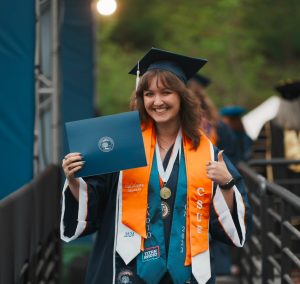
A few fun facts about me:
- I am a chronic user of exclamation points
- I have a one-eyed calico cat named Macy (see image below)
- I used to work at the radio station at Cal State Fullerton, my alma mater!
- I collect lots of keychains to keep on my bag, so if you hear a lot of jingling in the distance, it is probably me 😀
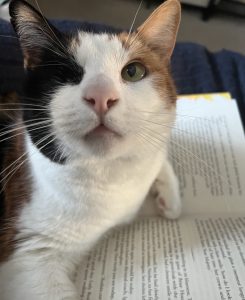
Macy, my one-eyed calico cat!
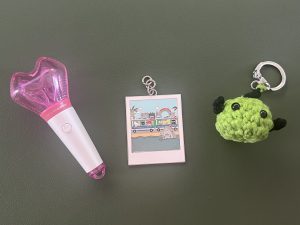
Three of my favorite keychains on my bag: A mini lightstick for k-pop group Girls Generation, a polaroid-style keychain showing Hello Kitty and friends on the Universal Studios Hollywood backlot tour, and a crocheted Junimo from video game Stardew Valley (I made this one myself!)